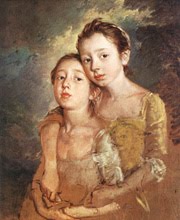30 years ago in the summer of 1981, I heard this talk in Boulder, Colorado by Choygyam Trungpa Rinpoche, a very controversial Tibetan Lama. To say he put the wheels back on my car is an understatement. I was thunderstruck by his belief in the basic sacredness and goodness of art. At that time art was in the hands of the neurotic, the insane and the money launderers. It still is and it seemingly goes on unabated. How else to explain the horrors of a Damien Hirst.
He gave strength to my belief in the power of beauty and aesthetics in art. I remember to this day sitting in the audience and sobbing, both with relief and joy.
He has his detractors, but I know people who knew him personally and benefited immensely from his wisdom. One of his foremost students is the inestimable Pema Chodron.
Some of his thoughts are below.
“A work of art is created because there is basic sacredness, independent of the artist’s particular religious faith or trust. Sacredness from that point of view is the discovery of goodness, which is independent of personal, social, or physical restrictions.” Chogyam Trungpa Rinpoche. Pg. 130, in True Perception
JTADHARMA ART LETTER, written by Chogyum Trungpa RinpocheIn talking about Dharma Art here, we do not mean art, which necessarily depicts Buddhist symbols or ideas, but rather art which springs from a certain state of mind on the part of the artists. We can call this the meditative state: an attitude of directness and unselfconsciousness in one’s creative work.The basic problem of artistic endeavor is the tendency to split the artists from the ‘audience,’ trying to send a message from one to the other. When this happens, art becomes exhibitionism: the person who gets some tremendous flash of inspiration, them rushes to ‘put it down on paper’ to impress or excite others; or the very deliberate artist who strategizes each step of his work to produce certain effects on his viewers. No matter how well intentioned or how technically accomplished, these approaches inevitably become clumsy and aggressive, towards others and toward oneself.In ‘meditative’ art, the artist embodies the viewer as well as the creator as he works. Vision is not separate from operation, and there is no fear of being clumsy or failing to achieve his aspiration: he simply makes his painting, poem, piece of music, whatever.In this sense, a complete novice could pick up a brush and, with the right state of mind, produce a masterpiece. This is possible. But it is a very hit-and-miss approach. In art, as in life generally, we need to study our craft, develop our skills, and absorb the knowledge and insight passed down by tradition.But whether we have the attitude of a student, who could still become more proficient in handling his materials, or the attitude of an accomplished master, when we are actually creating a work of art there is a sense of total confidence; our message is simply appreciating the nature of things as they are and expressing it without any struggle of thoughts and fears. We give up aggression, either toward ourselves – that we have to make a special effort to impress people; or toward others – that we can put something over them. Genuine art – Dharma Art- is simply the activity of non-aggression.
Sunday, June 19, 2011
Subscribe to:
Post Comments (Atom)











1 comment:
Makes me smile:-)
Post a Comment